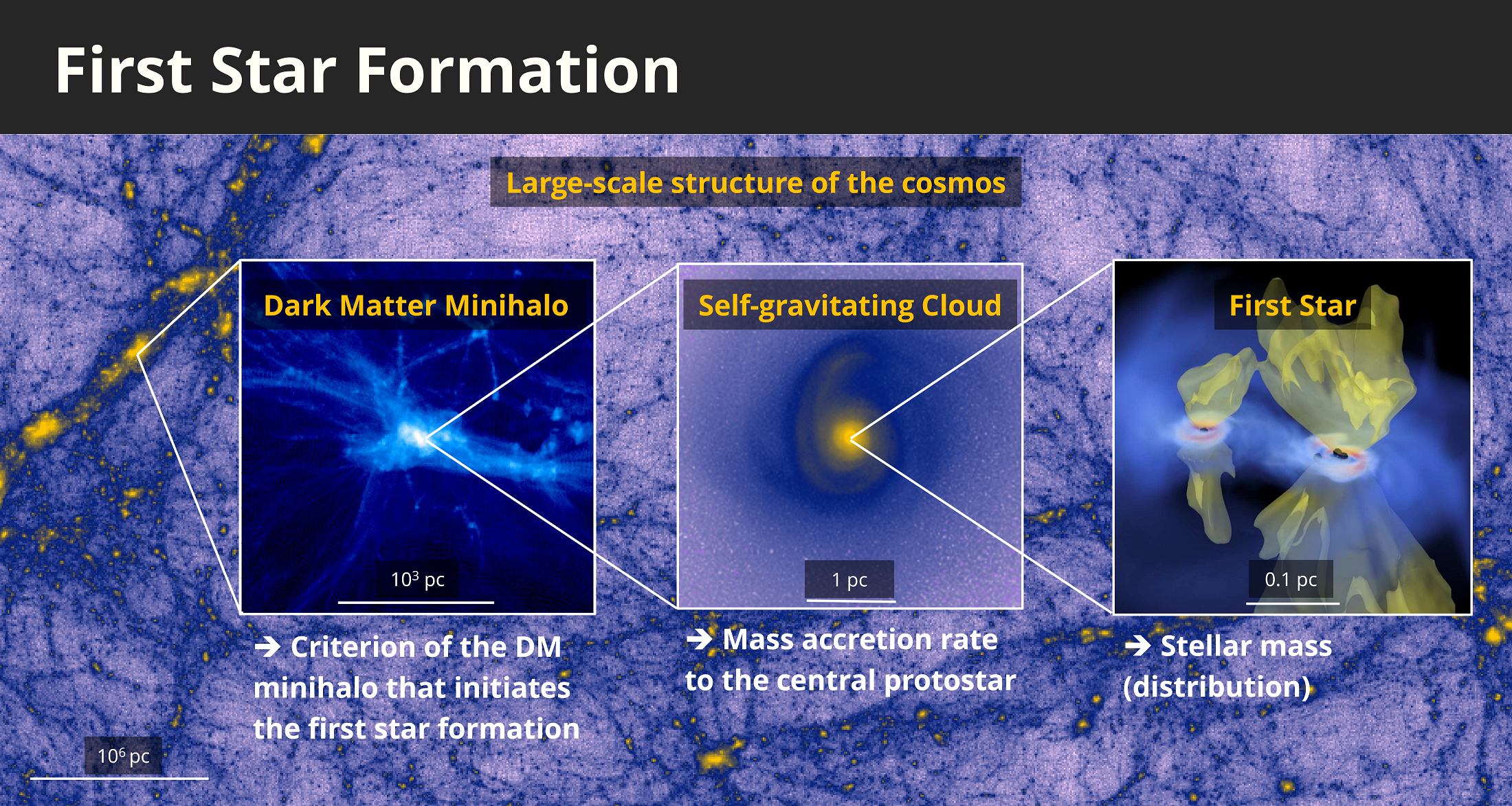Tsukuba Uchu Forum
137th Uchu Forum
シミュレーション・サーベイで探る,初代星形成の統一シナリオ
Shingo Hirano
The University of Tokyo
Abstract
First stars or Population III stars are the first generation of stars born in primordial gas clouds in the early universe, and are considered to have formed and evolved differently from later generations of stars (Population II/I stars) whose gas clouds contain heavy elements. Recently, with the advent of the James Webb Space Telescope (JWST), observational studies of the most distant galaxies at redshifts of 10 or more have accelerated, and the importance of building theoretical models of first stars and first galaxies is increasing. In this talk, I will review the theoretical studies of first stars that have been carried out using numerical simulations. In particular, I will summarize recent research trends and introduce the results of our group on (1) halo mass, which determines when and where the first stars are born, and (2) stellar mass, which determines the life and end of the first stars, which are important when modeling the early cosmic evolution as components of the first stars. (1) The halo mass required for the onset of primary star formation depends on the relative velocities of dark matter and baryons in the early universe. From a simulation survey, we have clarified the dependence of the halo mass on the relative velocity and obtained the appearance rates of qualitatively different primary star formation processes (stars, star clusters, and supermassive stars). (2) We found that the weak primordial magnetic field in the early universe is exponentially amplified during the star formation strategy stage (late stage). The strong magnetic field suppresses the breakup of the circumstellar disk and promotes gas accretion onto the central star, resulting in an increase in stellar mass. In the final part of the talk, I summarize the current status and future challenges of the primary star formation scenario and discuss future prospects.


 和 英
和 英